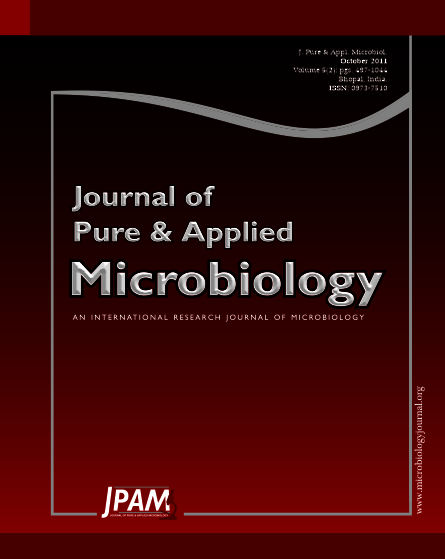A total of ten isolates were obtained from rotted feathers and soils from a local poultry farm waste at Bodija in Ibadan and screened for proteolytic activity and feather degradation. Selected isolates were identified as Bacillus licheniformis (E1), Bacillus subtilis A (D1), Bacillus subtilis B (D1W), Bacillus cereus (B1), Pseudomonas aeruginosa (E2) and Pseudomonas putida (B2). B. licheniformis (E1) gave highest feather degradation rate of 47% while the lowest degradation rate of 25% was observed with B. subtilis B (D1W). The effect of incubation time, pH and agitation rate on keratinase production was determined using feather powder as substrate. B. licheniformis (E1) had the highest keratinolytic activity of 25.336U/ml and B. subtilis B (D1W) had the lowest keratinolytic activity of 10.604U/ml at incubation time of 72hrs, pH 7.2 at 200rpm. The effect of other keratin substrates on keratinase production using chicken nails, wool and hair as substrates at pH 6.8 and 7.2 was determined. All the substrates induced keratinase production and the highest production was observed with feathers (25.336U/ml) followed by wool (22.5U/ml) and then hair (20.04U/ml). Keratinase production by nails was the least with the value of 6.43U/ml. The isolated bacteria were capable of degrading other keratin-containing materials including feathers, hair, wool and nail. The isolated B. licheniformis with the highest keratinolytic activity could be a potential organism for degradation and utilization of keratin.
Keratinases, Feather degradation, Proteolytic activity, Keratin substrates
© The Author(s) 2011. Open Access. This article is distributed under the terms of the Creative Commons Attribution 4.0 International License which permits unrestricted use, sharing, distribution, and reproduction in any medium, provided you give appropriate credit to the original author(s) and the source, provide a link to the Creative Commons license, and indicate if changes were made.


